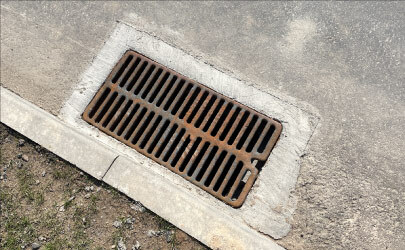Why Municipal Awareness Gaps Are Holding Back the U.S. Composite Manhole Covers Market Potential

The U.S. composite manhole covers market is experiencing steady growth, propelled by the modernization of infrastructure, safety requirements, and a transition to lightweight, corrosion-resistant materials. However, several critical challenges impede the widespread adoption and scalability of composite alternatives in municipal and industrial applications. These challenges include regulatory inconsistencies, cost barriers, technical limitations, supply chain dependencies, and low market awareness, all of which influence the competitive positioning and profitability of manufacturers.
A significant challenge in the U.S. composite manhole covers market is the regulatory inconsistency across states and municipalities. The infrastructure network in the U.S. is governed by a complex array of local, state, and federal standards. Each jurisdiction enforces its specifications regarding load ratings, materials, and installation procedures. For example, states like California and New York have implemented advanced composite-friendly guidelines for municipal infrastructure, while several Midwestern regions continue to mandate traditional cast iron designs due to legacy procurement codes. This fragmentation results in operational inefficiencies for manufacturers, who must customize designs and certification processes for varying jurisdictions, thus increasing time-to-market and compliance costs by an estimated 15 to 20 percent.
Another major obstacle is the high initial manufacturing cost of composite covers. The production of high-strength fiber-reinforced polymers necessitates advanced resins, such as epoxy or vinyl ester, combined with glass or carbon fibers that enhance mechanical strength. These raw materials contribute to nearly 30 percent of the total production cost. In comparison, conventional cast iron covers are priced between USD 150 and USD 250 per unit, whereas composite alternatives typically range from USD 350 to USD 600, depending on load class, size, and resin composition. While the life-cycle benefits, including lower maintenance and corrosion resistance, can offset costs over time, budget-constrained municipalities often prefer cheaper upfront options, particularly in regions with lower traffic loads or restricted infrastructure funding.
The supply chain's dependency on imported resins and fiber materials further complicates production challenges. The U.S. relies on suppliers from countries like China, South Korea, and Germany for high-grade glass fiber and epoxy compounds. During the pandemic, resin shortages and shipping delays led to a rise in raw material prices by over 25 percent, thereby increasing overall production costs. Reports in 2024 indicate that manufacturers continue to face procurement costs that are 10 to 12 percent higher than pre-2020 levels. This reliance on foreign suppliers underscores the need for domestic resin production or innovations in recycling-based composite materials to ensure long-term stability.
Technical performance limitations also restrict the adoption of composite manhole covers in heavy-load or high-temperature environments. Although composite covers excel in terms of corrosion resistance and lightweight handling, they demonstrate a lower modulus of elasticity compared to metals, resulting in deformation under sustained heavy loads. This characteristic makes them less suitable for application in highways, industrial plants, and airports where load ratings exceed 40 tons. Manufacturers are exploring the investment in hybrid composite-metal reinforcements to address this issue, but such innovations also increase costs and production complexity. Additionally, achieving temperature resistance above 150°C remains a challenge, restricting their use in steam utility networks and specific industrial settings.
The lack of awareness and prevailing resistance to change within municipal procurement departments represent another bottleneck for the market. Decision-makers often perceive composite covers as having limited durability or assume they are unsuitable for long-term public infrastructure, despite field data indicating otherwise. Research has shown that composite covers can last up to 30 years with minimal corrosion, while cast iron covers typically require replacement every 10 to 15 years. Nonetheless, the limited number of pilot projects and insufficient case studies contributes to low adoption rates, estimated at only 15 to 20 percent of total installations in urban areas as of 2024.
Recycling and end-of-life management offer emerging challenges as well. While composites present sustainability advantages due to reduced emissions and the recyclability of resins, the lack of large-scale composite recycling infrastructure in the U.S. hampers the implementation of a circular economy. Currently, a majority of composite waste is directed to landfills due to the difficulties associated with separating fibers from resin matrices. As sustainability regulations tighten, particularly under the Environmental Protection Agency (EPA) framework for municipal waste management, manufacturers may face additional compliance costs related to waste handling and eco-design.
Lastly, limited skilled labor and tooling capabilities contribute to production constraints. The molding and curing processes for composites require specialized equipment and workforce training, which many mid-tier manufacturers struggle to provide.